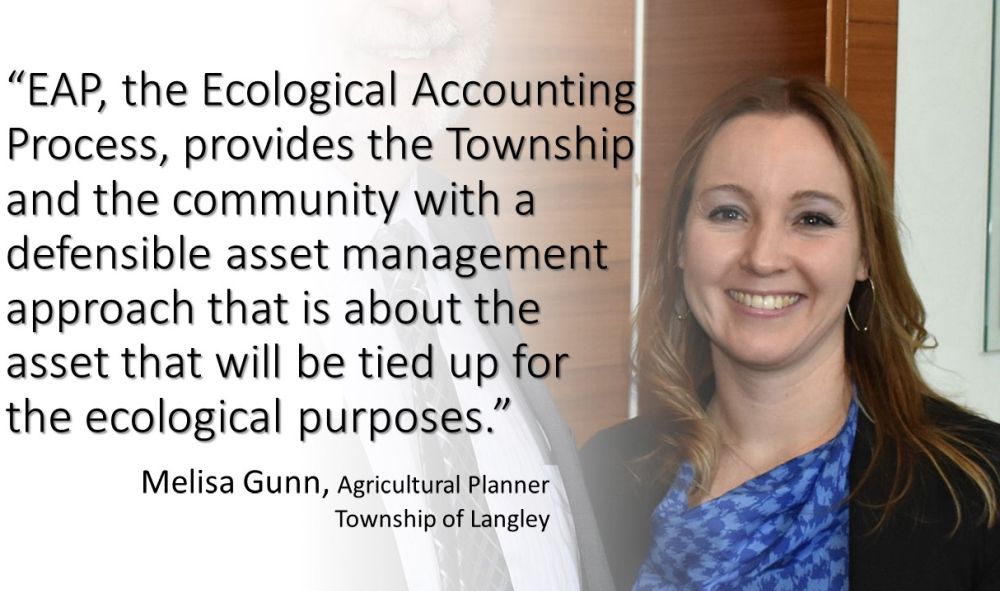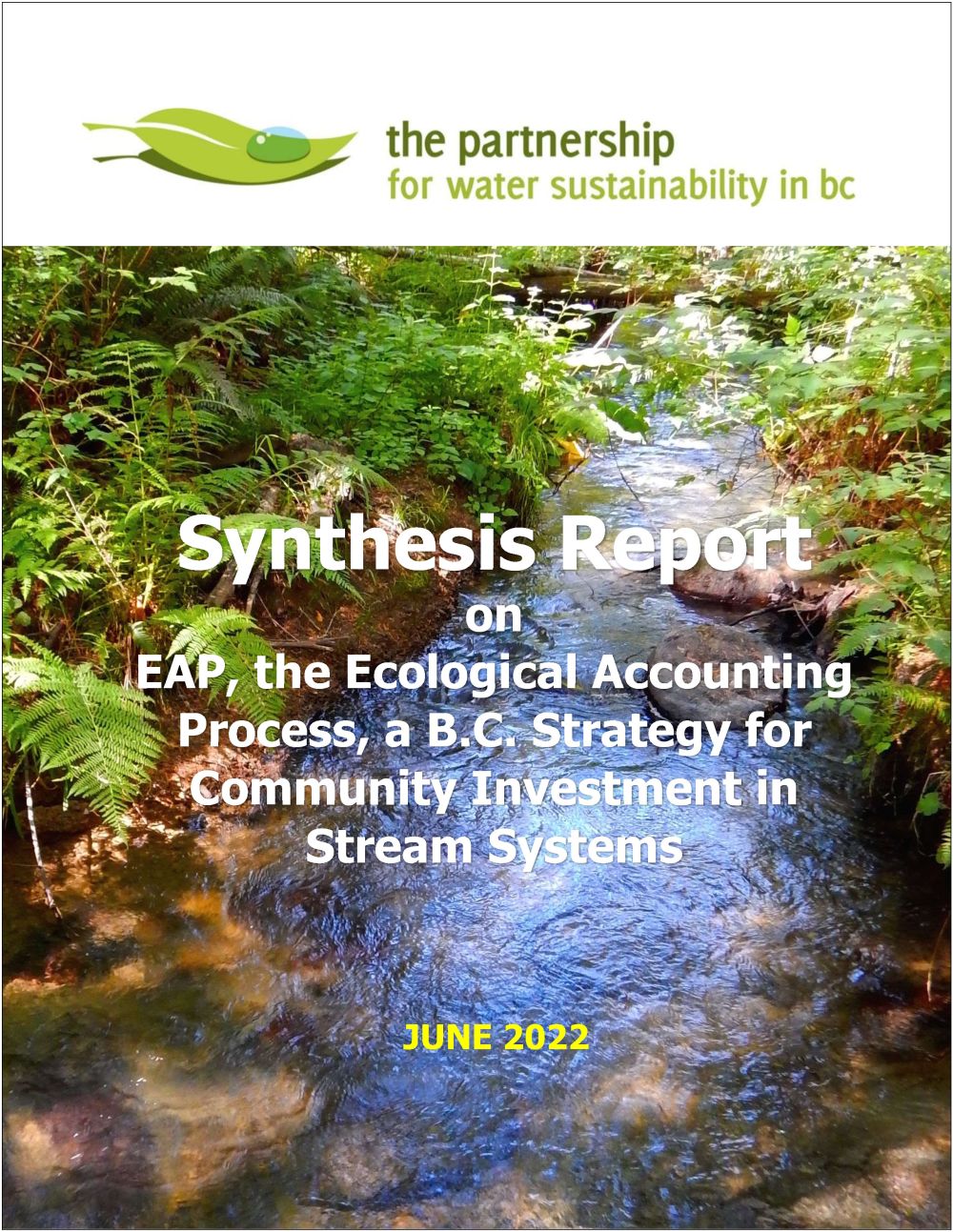DEMONSTRATION APPLICATION OF ECOLOGICAL ACCOUNTING PROCESS: Bertrand Creek in the Township of Langley, completed in 2022
NOTE TO READER:
EAP, the Ecological Accounting Process, is a pragmatic ‘made in BC’ approach to valuation of the ecological services supplied by a stream (one of our most common ecological systems). Think of it as a decision support tool for use by the community and local government.
EAP addresses this question: How do communities decide how much to invest in the natural commons? The EAP methodology and metrics enable a local government to determine the WORTH of the natural commons, with ‘worth’ being the foundation for an annual budget for maintenance and maintenance of ecological assets.

Methodology for finding the Natural Capital Asset Value of the Bertrand Creek System
“The Langley Ecological Services Initiative is about compensating rural parcel owners who are willing to set aside areas of their land to protect and/or enhance riparian and woodland assets in the Bertrand Creek watershed,” stated Melisa Gunn, a planner with the Township of Langley whose work is focused on agriculture. She works closely with the farming community, the Council-appointed agriculture committee and other Township departments to provide support navigating bylaws and provincial legislation.
“Bertrand Creek and its tributaries drain the southeast quarter of the Township of Langley and is a transboundary watershed. The Bertrand system occupies 14% of the municipality’s total land base The main stem originates in a rural area, swings through urban Aldergrove, and flows south through agricultural land into Washington State. There, it discharges into the Nooksack River.”

Applied Research Question
“The Township posed the question: Is ‘payment for ecological services’ part of an Asset Management Strategy? The Township required a financial value for the parcels and portions of parcels situated within the streamside protection zone and adjacent areas and the value that a farmer has to forgo in order to keep the protected/enhanced land from active agricultural use (opportunity cost).”
“The Township turned to the Ecological Accounting Process (EAP) for a method to find the financial value as well as the worth of these streamside assets. EAP uses BC Assessment data for parcels (in aggregate) which abut or intrude into the riparian setback zone. This method produces for any length of the stream system the financial value per m² of the riparian and adjacent woodland assets.”
“These areas are critical for the support of the stream system. This provides the Township and the community with a defensible asset management approach that is about the asset that will be tied up for the ecological purposes,” stated Melisa Gunn.
To Learn More:
Cut to the chase and read the 2-page extract titled Stage 3 (Mainstream) – Bertrand Creek in the Township of Langley.
After that, why not download and read a copy of the entire Synthesis Report on EAP, the Ecological Accounting Process, A B.C. Strategy for Community Investment in Stream Systems (2022), the 4th in the Beyond the Guidebook series of guidance documents.
The Synthesis Report is a distillation of over 1000 pages of case study documentation into a storyline that is conversational and written for a continuum of audiences that includes land use practitioners, asset managers, stream stewards, and local government decision-makers.

DOWNLOAD A COPY OF https://waterbucket.ca/gi/wp-content/uploads/sites/4/2022/06/EAP-Synthesis-Report-Beyond-the-Guidebook-2022_Jun-2022.pdf

